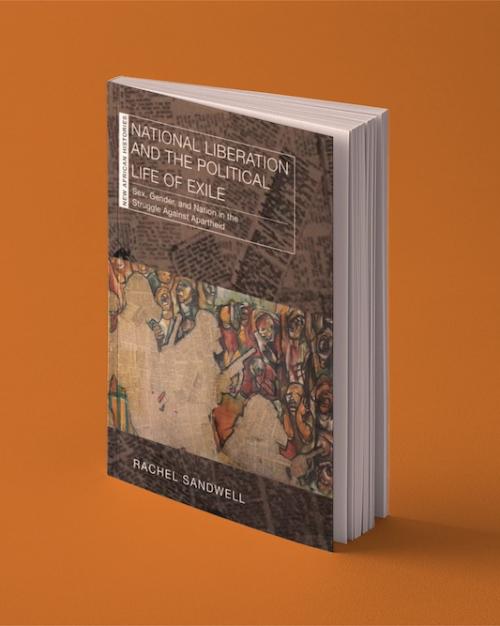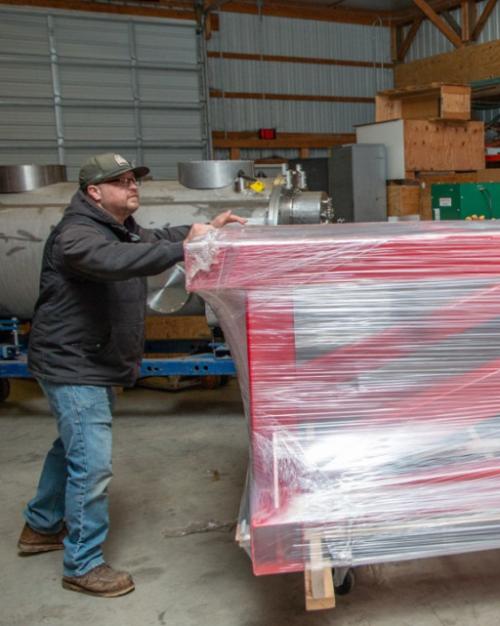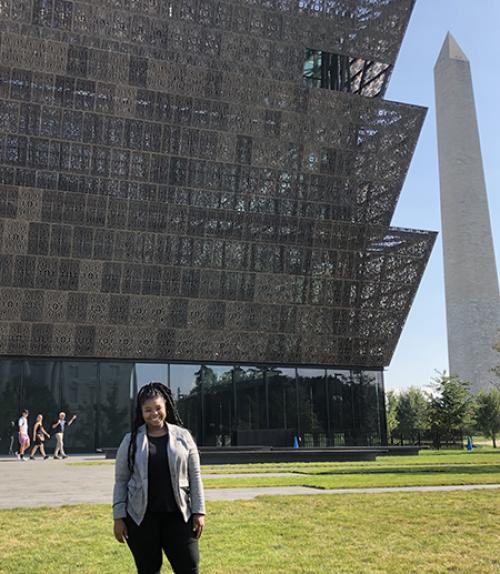Amina Kilpatrick '21, a government and economics major in the College of Arts & Sciences, spent her summer interning at the National Museum of African American History and Culture and was one of the 117 students in the College who won summer experience grants to help with living and travel expenses. Find out more about her adventures in D.C.:
Tell us about what you've been doing this summer?
This summer I am working at the National Museum of African American History and Culture in Washington, D.C. as an intern in the Social Media department. NMAAHC is a part of the Smithsonian institution and is the latest museum to have opened up on the National Mall in 2016 after being established by Congress in 2005. As an intern with the Smithsonian, I have had both an educational and practical experience learning how to manage a social media account for a brand with hundreds of thousands of followers. As a social media intern, I work under the office of public affairs and have done research, written copy and provided content for the social media accounts of NMAAHC. I created content for the museum including designing graphics and writing copy. I also provided support to the social media team during their coverage of events live on social media, including writing copy and taking photos and videos that the museum team published live. Additionally, I worked with interns in other departments to formulate an integrated marketing campaign.
Why did you apply for this position?
I applied for this position because I love the purpose of the Museum and its mission. As an African American woman whose ancestors were enslaved, this museum tells the story of my history and my people in a thoughtful and articulate way centered around African American history. I had visited the National Mall prior to the Museum opening and none of the other museums told the story of African Americans in such a detailed manner. Additionally, I am a news editor for The Cornell Daily Sun and my job is to tell stories there. I have had a lot of experience writing through The Sun and managing social media sites, so the qualifications for social media Intern fit what I had done at The Sun. Additionally, NMAAHC’s social media sites tell the stories of the museum in a way that is very unique to the museum world. I had followed their social media accounts since before the museum opened and the content engages the user in more than a simple “marketing way.”
Was your work directly related to what you’ve been studying at Cornell?
While the social media internship was not directly related to what I am studying at Cornell as a government and economics double major, I have taken courses within the Africana Studies department. Working at the museum has brought my coursework to life. I took the course “Black Radical Tradition” with Prof. Russell Rickford where we talked about radical black figures in American history and their political ideologies. Paul Robeson was one of those figures and I remember going through the museum and seeing him highlighted in a way that Prof. Rickford described. Additionally, I took Intro to Africana Studies with Prof. Olufemi Taiwo. The theorists and books on the syllabus gave me a background knowledge that provided a more informed experience learning about the slave trade and history of African Americans in this country.
Additionally, I am a member of the Cornell Prison Education Program. The museum features the Angola Prison as well as a cell from the Mississippi state penitentiary, Parchman farm. These features are also subjects I am interested in.
Is this the kind of job you could see yourself having one day?
This is a job I could see myself in. I want to be a story teller whether it is through news stories, or documentaries or social media sites, I want to share information in a thoughtful and critical way. This internship showed me how this was possible
What was most exciting for you about this position?
The most exciting things about this position were the events the museum hosted and the high-profile figures who visited. During my time there, we had two events, Women’s E3, which featured actress Yara Shahidi and her mother Keri Shahidi, lawyer and politician Stacey Abrams and many other wonderful black women. While at work, I got to both assist the social media team with their coverage of an event that they published social media for, as well as learn from the speakers myself and attend the event. There was also an event featuring Big Freedia and Karamo Brown from Queer Eye, which commemorated Pride Month and was hosted on June 22, Solstice Saturday, when Smithsonian museums are open until midnight. This event was similarly nice because I saw the museum reach beyond its physical space to become a community location for people to enjoy themselves and engage in a more social way. Big Freedia performed and there was a dance party afterwards and it was beautiful to see another aspect of African American culture honored by a national museum by allowing the social events to occur in the space, free to the audience as well!
What was most challenging for you about this position?
The most challenging was creating daily engaging content. Creating social media content is no easy feat and keeping people interested is hard. There are many questions that go into posts and everything has to be accurate. With such a large audience, it is important that the information you display is correct and is an accurate representation of the museum and its brand. Planning content ahead is a great way to mitigate the difficulty of creating daily content. However, with everything in life, things come up and the social media accounts are also used as a way to convey information. So if there is breaking news, it is also necessary for the museum to share that information via their social media accounts and that requires careful thought.
Did the internships involve living in a new city for you? What was most helpful about having the summer experience grant money?
Yes, it did. I moved to Washington, D.C. for the summer. The summer experience grant was most helpful for housing. Although this internship was paid, housing in D.C. is very expensive and I had to find a place to live. The summer experience grant allowed me to take on this internship because I was able to afford housing and therefore work at NMAAHC for 10 weeks. This grant afforded me the opportunity to experience living in a big city for the first time and do an internship away from my home.




